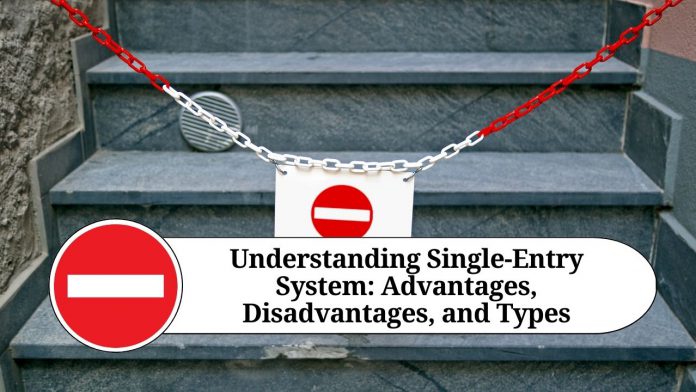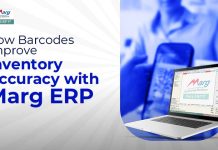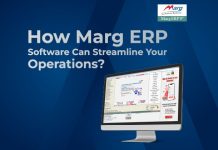Single Entry System: An Overview
The single-entry system, also known as the incomplete record system, is an accounting method that is simpler than the double-entry system. In this system, only one account is used to record a transaction, unlike the double-entry system, where two accounts are used. The single-entry system is often used by small businesses and individuals who do not require detailed financial statements.
The single-entry system works on the principle of cash-basis accounting, which means that transactions are recorded only when cash changes hands. This system does not use a formal set of accounts, such as the chart of accounts in the double-entry system, and instead records transactions in a simple format, such as a cash book or a ledger.
Advantages of the Single Entry System
- Simplicity: The single-entry system is much simpler than the double-entry system. This system requires only basic accounting knowledge and can be easily maintained by small business owners who do not have formal accounting training.
- Cost-effective: Since the single-entry system requires minimal accounting expertise, it is a cost-effective way to maintain financial records. This system does not require expensive accounting software or professional accountants, making it an affordable option for small businesses.
- Time-saving: The single-entry system requires less time and effort to maintain than the double-entry system. This system can be easily maintained by recording cash transactions in a cash book, which can be updated on a daily or weekly basis.
- Real-time view of cash flow: The single-entry system provides a real-time view of cash inflows and outflows. This system can help small business owners make informed financial decisions, such as when to make purchases or when to collect payments from customers.
Disadvantages of the Single Entry System
- Limited information: The single-entry system provides limited financial information compared to the double-entry system. This system does not record non-cash transactions, such as depreciation or inventory, which can make it difficult to track the financial health of a business.
- Limited auditability: The single-entry system is less auditable than the double-entry system. This system does not provide a complete financial picture, making it difficult for auditors to verify the accuracy of financial statements.
- Limited scalability: The single-entry system is not suitable for large or growing businesses. As a business grows, it becomes more complex, and the single-entry system may no longer be able to meet the needs of the business.
- Types of Single-Entry System: There are different types of single-entry systems that businesses can use to record their financial transactions. Here are some of the most common ones: Cash Book: A cash book is a record of all cash transactions that a business makes, such as cash sales, cash purchases, and cash payments. This is a simple and easy-to-maintain way of recording financial transactions.
- Simple Ledger: A simple ledger is a record of all transactions in one account. This is useful for businesses that have only one or a few accounts that they need to track.
-
Statement of Affairs: A statement of affairs is a summary of a business’s assets and liabilities. It provides an overview of the business’s financial position at a given point in time.
Advantages of the Single Entry System
1. Easy to learn and use: The single-entry system is easy to learn and use, which makes it a good option for small businesses that do not have dedicated accounting staff.
2. Saves time: The single-entry system requires less time and effort to maintain than the double-entry system, which frees up time for business owners to focus on other aspects of their business.
3. Cost-effective: The single-entry system is less expensive than the double-entry system because it requires less specialized knowledge and training.
4. Suitable for small businesses: The single-entry system is ideal for small businesses that have relatively simple financial transactions and do not require detailed financial statements.
Disadvantages of the Single Entry System
Limited information: The single-entry system provides limited financial information compared to the double-entry system. It does not record non-cash transactions, such as depreciation, which can make it difficult to track the financial health of a business.
Limited auditability: The single-entry system is less auditable than the double-entry system because it does not provide a complete financial picture of a business.
Limited scalability: The single-entry system is not suitable for large or growing businesses because it cannot handle the complexity of their financial transactions.
No checks and balances: The single-entry system does not have the checks and balances that the double-entry system has, which can lead to errors and inconsistencies in financial records.
Conclusion
The single-entry system is a simple and cost-effective way for small businesses to maintain their financial records. It is easy to learn and use, and it saves time and money. However, it has some limitations, such as providing limited financial information and not being suitable for large or growing businesses. As a result, businesses should carefully evaluate their needs before choosing the single-entry system as their accounting method.
Read more useful content:
- section 234e of income tax act
- section 286 of income tax act
- section 90a of income tax act
- section 40a(7) of income tax act
- section 226(3) of income tax act
- section 24 of income tax act
Frequently Asked Questions (FAQs)
Q1. What is a single-entry system in accounting?
A single-entry system in accounting is a simplified method of recording financial transactions. In this system, only one account is used to record each transaction, as opposed to the double-entry system, where two accounts are used.
Q2. When is a single-entry system used?
The single-entry system is often used by small businesses or individuals who do not require detailed financial statements. It is a cost-effective and simple way to maintain financial records.
Q3. What are the advantages of a single-entry system?
The advantages of a single-entry system include its simplicity, cost-effectiveness, and time-saving nature. It is easy to learn and use, and it provides a real-time view of cash inflows and outflows.
Q4. What are the disadvantages of a single-entry system?
The disadvantages of a single-entry system include limited financial information, limited auditability, limited scalability, and no checks and balances.
Q5. Can a business switch from a single-entry system to a double-entry system?
Yes, a business can switch from a single-entry system to a double-entry system if it requires more comprehensive financial information or if it is looking to grow.
Q6. What are the types of single-entry systems?
The types of single-entry systems include the cash book, simple ledger, and statement of affairs. These are all simple and easy-to-maintain ways of recording financial transactions.
Q7. Is a single-entry system suitable for large businesses?
No, a single-entry system is not suitable for large businesses because it cannot handle the complexity of their financial transactions.
Q8. Does a single-entry system require formal accounting training?
No, a single-entry system does not require formal accounting training. It is easy to learn and use, which makes it a good option for small businesses that do not have dedicated accounting staff.
Q9. Is a single-entry system auditable?
Yes, a single-entry system is auditable, but it is less auditable than the double-entry system because it does not provide a complete financial picture of a business.
Q10. How often should a single-entry system be updated?
A single-entry system should be updated on a regular basis, such as daily or weekly, to provide a real-time view of cash inflows and outflows.




















